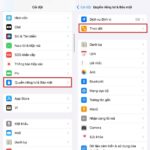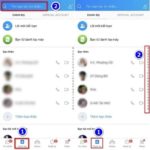Population data is an important part of the national information system. It plays a crucial role in the management and development of the country. Retrieving population information from the national database helps governments and organizations obtain accurate and timely figures to make appropriate decisions.
In this article, FPT Shop will provide a detailed guide on how to retrieve information from the national population database so that individuals can search and record their own population information.
Overview of the national population database
The national population data is a collection of information on population, housing, and other related information of individuals residing in Vietnam, collected through the Census of Population and Housing (CPH) and other sources. This is one of the most important sources of information for the national population database.
/fptshop.com.vn/uploads/images/tin-tuc/175079/Originals/2024-01-28_230727.jpg)
Individuals can completely search for information on the national population database to know their own personal and family information.
Purpose of the national population database
The national population database (NPDB) is an integrated information system that stores, manages, and provides information about the population nationwide. This system requires accuracy, regular updates, timeliness, and consistency. NPDB is built and implemented with the purpose of serving the management and development of the country. National population information can be used to assess the population and housing situation of the country, formulate development strategies and policies, as well as meet the information needs of organizations and individuals.
Types of information stored in the national population database
Information in the national population database includes numbers and statistics on population, housing, and other related information of individuals.
The national population data includes personal information such as last name, first name, date of birth, gender, place of birth, permanent address, temporary address, education level, marital status, occupation, and other information.
Benefits of the national population database
The use of the national population database brings many important benefits to both the government and the community. Here are some key benefits:
Population management:
- Population monitoring: Helps the government track the quantity and distribution of the population over time, thereby making reasonable decisions on land development and management.
- Population forecasting: Provides data for population growth forecasts, helping to plan long-term social and economic development.
Resource management:
- Land management: Provides information on the geographical distribution of the population, helping the government effectively manage land, urban and rural development.
- Human resource management: Helps identify available labor resources, skills, and labor market needs.
Development planning:
- Urban planning: Population data supports urban planning and the construction of infrastructure such as schools, hospitals, transportation, and public utilities.
- Resource allocation: Allows the government to allocate resources and budgets more efficiently based on the specific needs of each region.
Social and economic forecasting:
- Standard of living assessment: Population information helps assess the standard of living of the population and identify social issues that need to be addressed.
- Economic analysis: Provides data for analyzing the economic situation, consumer market, and future economic trends.
Security and defense:
- Security management: Population data helps the government monitor and manage national security.
- Disaster prevention: Provides important information for disaster prevention and emergency response planning.
Social policies and healthcare:
- Healthcare and education service distribution: Supports investment planning in healthcare and education services based on the specific needs of the population.
- Social policy implementation: Population data is the basis for shaping and implementing social policies, ensuring fairness and sustainability.
The national population database is an important tool that helps the government better understand the community and make informed decisions based on reliable scientific basis.
Summary of ways to retrieve information from the national population database
Method 1: Through the e-Government portal under the Ministry of Public Security
Step 1: Access the National Population e-Government Portal of the Ministry of Public Security at HERE.
Step 2: Click Sign in. If you don’t have a VNeID account or a national e-Government service account, you can click Register and follow the instructions to create an account.
/fptshop.com.vn/uploads/images/tin-tuc/175079/Originals/1.jpg)
Step 3: You will have two options to log in to the National Population e-Government Portal using a leased storage account (usually rental places) or a National e-Government Service account (all people in Vietnam). Generally, you should choose the second option to log in.
/fptshop.com.vn/uploads/images/tin-tuc/175079/Originals/2.jpg)
Step 4: The next login step requires you to enter a National e-Government Service account or an electronic identity card VNeID account from the Ministry of Public Security. There is also an account provided by Vietnam Post Office. In this guide, we choose the National e-Government Service account as an example to retrieve information from the national population database.
Step 5: Log in to your account and receive the verification code sent to your registered phone.
Enter complete information and click Sign in
Enter the OTP code sent to your phone to confirm the login to the system
Step 6: On the homepage of the Ministry of Public Security’s e-Government Portal, click on the account name > Personal information.
/fptshop.com.vn/uploads/images/tin-tuc/175079/Originals/6.jpg)
The displayed personal information includes last name, identification number, date of birth, email (if any).
Step 7: To view more details, you can click on Account name > Retrieve citizen information.
/fptshop.com.vn/uploads/images/tin-tuc/175079/Originals/8.jpg)
Additional information includes ethnicity, nationality, religion, permanent address, family household registration.
More details about family household registration after you click View details
Family household registration information
Method 2: Retrieve information through the National e-Government Portal
Step 1: Access the National e-Government Portal at HERE.
Step 2: Click on Sign in to log in to your account on the National e-Government Portal. If you don’t have an account, you can click Register to create one. Registering an account on the National e-Government Portal is also not difficult as users only need to provide information such as ID card number, full name, date of birth, phone number, and email to register.
/fptshop.com.vn/uploads/images/tin-tuc/175079/Originals/12_5.jpg)
Moreover, recently, the National e-Government Portal has also synchronized the feature of logging in with VNeID accounts registered through the Ministry of Public Security. You can enter the login account of the VNeID application to log in or scan the QR code in that application to access and retrieve information from the national population database.
/fptshop.com.vn/uploads/images/tin-tuc/175079/Originals/12_6.jpg)
/fptshop.com.vn/uploads/images/tin-tuc/175079/Originals/13.jpg)
Step 3: Choose the login account type. In this article, the writer chooses to use a pre-existing National e-Government Service account. Enter the login information and receive the OTP authentication code sent to your phone.
/fptshop.com.vn/uploads/images/tin-tuc/175079/Originals/12_7.jpg)
/fptshop.com.vn/uploads/images/tin-tuc/175079/Originals/12_8.jpg)
Step 4: On the homepage of the National e-Government Portal, click on the account name in the upper corner and select Personal information.
/fptshop.com.vn/uploads/images/tin-tuc/175079/Originals/15.jpg)
Step 5: On the Personal Information page, you can check all your personal information. Click Identity information to retrieve personal data from the national population database. You can click Extended information to view detailed personal information.
/fptshop.com.vn/uploads/images/tin-tuc/175079/Originals/16.jpg)
/fptshop.com.vn/uploads/images/tin-tuc/175079/Originals/17.jpg)
Identity information of each individual is listed quite comprehensively and in detail
/fptshop.com.vn/uploads/images/tin-tuc/175079/Originals/21.jpg)
Extended information will provide additional information such as current address, tax code, health insurance number, passport number, or driver’s license
Step 6: Not only viewing personal identification information, but you can also edit and update the information if there are any inaccuracies.
Step 7: Access and manage personal e-Government services such as tax, electricity payment, tuition fee payment, social insurance, and administrative fine payment easily on the e-Government service management page.
/fptshop.com.vn/uploads/images/tin-tuc/175079/Originals/22(1).jpg)
Conclusion
Through this article, FPT Shop has introduced the concept and purpose of the national population database and some ways to retrieve information from the national population database. It is hoped that the guide on retrieving national population information will help you better understand the purpose of searching population information on the national population database and provide useful information for management and social operations.
Updating Your Profile Picture on Nhaccuatui: Make a Big Impression!
Personalize your Nhaccuatui account today by selecting an avatar that reflects your music taste and style. With an easy click of a button, you can create a one-of-a-kind profile page and make a statement to your online music community. Show your individual flair and let your account stand out from the crowd.
Steps to Safeguard Privacy on iPhone Using Tracking Apps
In an effort to combat applications that track the user data on iPhones, it is now imperative to deactivate the ‘Allow Apps to Track’ setting. Such applications collect user information in a way that is both difficult to control and largely undetectable, making these changes essential for preserving user privacy.






































